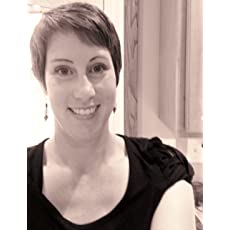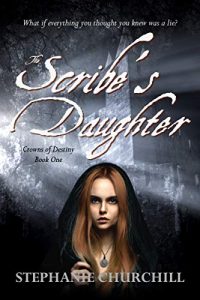Intuitive Writing and Character Formation
 Inspiration is a funny thing. Mysterious and mystical, it’s difficult to know where it comes from. And unless one writes biographical fiction, characters are inspired by something. Before I started writing books, I imagined that somehow characters formed by themselves without too much effort, as if they leapt onto the page fully formed. Even when I wrote my first book, I thought it worked this way. The writing process was just as mysterious to me as character formation. You see, I’m an intuitive writer. I thought my writing just kind of happened. It was when I began books two and three that I realized characters were a little harder to pin down.
Inspiration is a funny thing. Mysterious and mystical, it’s difficult to know where it comes from. And unless one writes biographical fiction, characters are inspired by something. Before I started writing books, I imagined that somehow characters formed by themselves without too much effort, as if they leapt onto the page fully formed. Even when I wrote my first book, I thought it worked this way. The writing process was just as mysterious to me as character formation. You see, I’m an intuitive writer. I thought my writing just kind of happened. It was when I began books two and three that I realized characters were a little harder to pin down.
G.K. Chesterton once said, “A woman uses her intelligence to find reasons to support her intuition.” Now that I’ve published multiple books and drafted several others, I’ve come to find out that while I am an intuitive writer, and even though it’s difficult to articulate my process, I do have a process.
My first published book was born out of an experiment. I had already written an entire draft of another book, but I didn’t love the voice of that book. I had written it in third-person and began to wonder what might it be like to write in first person. As someone who loves to daydream with a constant inner monologue at any point in my day, it seemed a natural method of writing a story.
I don’t remember how it came about at the time, but the first thing I thought of was that scene from the Disney movie Aladdin where Aladdin has just stolen an apple and is running away from the city guards, singing the song “One Jump.”
I loved the idea of a feisty female heroine, so I re-imagined that scene from Aladdin, but this time with a character who would become Kassia. This was my initial spark of inspiration, but what does a writer do with that initial spark?
I’ve come up with six “thinking points” to help characters grow into a fully-fleshed and breathing individuals on the page:
Before I start writing any book, I have to know the why. My books need a purpose, a goal to accomplish. This is often called the theme of a book. Once I know my theme, I need to know how my characters relate to that theme. This guiding light is the compass for my main character throughout the entire book.
Think of people in your own life. Draw on their personalities and quirks. Observe crowds. How do people’s words match their actions? What does a friend’s face do when he speaks? How does her voice rise and fall in relation to the emotion of her body language? Observation is a gold mine, and if you love people-watching like I do, you will find no end to inspiration.
Once I have an idea about a main character, the story begins. But from this starting place, what happens next? It seems an overly simplified thing to consider, but your character will grow and develop as he or she interacts with her world and what is happening around her. Plot will determine this. But if you’re like me, you have no idea what is going to happen until you write it. So, plod along, get words on the paper, and remember that your first draft is written so you can rewrite it.
As you write, constantly ask yourself how your main character reacts to characters around her. Most plots are lineal, but character development is multi-dimensional. Once you know what happens next in the plot, you have to decide how your character will interact with the other characters. How are the other characters related to the book’s theme? Are they positive or negative influencers? Is their development in the story positive or negative? Does your main character learn or grow from others, or do others hold her back? Always keep your theme in mind.
Aside from your main character, think about other characters stories generally contain. In his book The Hero with a Thousand Faces, Joseph Campbell talks about archetypes – repeating characters or energies which occur across stories throughout the world and time and genre (the specific ones he named were hero, mentor, threshold-guardian, herald, shape-shifter, shadow, ally, and trickster). While your story may not follow the Hero’s Journey precisely, most books written in the agglomeration of Western civilization follow some form of the hero’s journey. Learning about these forms might clue you in to which characters might be missing from your story. And for those you’ve already written, identifying their form will also help you decide what each character should (or shouldn’t) do next.
Then just write! Write, write, write. I generally don’t discover the intricacies of my characters until I’ve written the entirety of the first draft and then begin to edit the character arcs of each person. That’s the fun work for me. I compare writing to painting. Once the general layout is painted in with words, I go back with my edits to add the details, the colors, the points of light that make up the beautiful canvas of a finished work.
So, the next time inspiration comes calling and it sends you down the path of writing a novel, rest assured that the mysterious and inspirational spark doesn’t just have to follow a blind and uninformed intuition. Your intuition has a source, and you can help it along with a bit of thought.
—
After serving time as a corporate paralegal in Washington, D.C., then staying home to raise her children, Stephanie Churchill stumbled upon writing — a career path she never saw coming. As a result of writing a long-winded review of the book Lionheart, Stephanie became fast friends with its New York Times best-selling author, Sharon Kay Penman, who asked her the fateful question, “Have you ever thought about writing?” Stephanie has since published three historical-feeling novels, The Scribe’s Daughter, The King’s Daughter, and The King’s Furies. She lives in the Minneapolis area with her husband, two children, and two dogs while trying to survive the murderous intentions of a Minnesota winter.
—
Website https://www.stephaniechurchillauthor.com
Facebook https://www.facebook.com/StephanieChurchillAuthor
Twitter https://twitter.com/WriterChurchill
Instagram https://www.instagram.com/schurchillauthor/
THE SCRIBE’S DAUGHTER
 Secrets can kill.
Secrets can kill.
Or, more precisely, those who want the secrets can kill.
Kassia had no secrets. At least… none she knew of. But she did have the necklace her father gave her several years before he disappeared. The necklace he’d told her to keep hidden.
Not long after a stranger shows up on Kassia’s doorstep, she finds herself on the run.As she slowly unravels clues to the mysteries of her family’s past, her discoveries make her the target of a man who would use her for his own dark ends.
But he has to catch her first.
Her only help comes from a band of exiles and the son of a man who has secrets of his own. After escaping the brutalities of prison, Kassia and Jack travel together through imperial cities, dark swamps, across stormy seas, and finally into the court of a man who has answers.
Too bad truth is often costly.
How much is Kassia willing to sacrifice to learn the truths her father kept from her all her life?
What if everything you thought you knew was a lie?
Buy the book today.
“This historical-feeling book has no history but felt vaguely medieval. That rooted the world for me while the deeply drawn characters and twisting plot made me turn pages. I didn’t want it to end.” – Sara
“This book is hands down the best medieval fantasy novel I’ve read in years.” -Lauren S.
“Kassia is a sassy, scrappy character who hooked me from the opening.” – cb
“Stephanie Churchill has vividly created a world that will feel familiar to those who enjoy medieval fiction. Kassia experiences adventures that take her on the full range of fortune’s wheel, and each setting is beautifully described. I had a clear vision of mountain vistas, sparkling lakes, bustling cities, and thick forests, and each felt as though I was thereat Kassia’s side… We get to laugh out loud at her snarky sarcasm while we are sharing her inner pain and doubt. This strong, courageous young woman goes through more to get her happily ever after than anyone in the story, besides the reader, is privy to.” – Carpe Librum
*2017 New Apple Award for Excellence in Independent Publishing – Solo Medal Winner, Fantasy
*2018 Golden Book Award
*indieB.R.A.G. Medallion Honoree
*Chill with a Book Award winner
BUY HERE
Category: How To and Tips, On Writing
























Good article. Curious about your process when you decided to switch from third person to first. Did you go into the 3P project and edit it, or did you just start over from scratch? I ask because I had considered re-writing my current WIP in first person, but the prospect of making all the editing changes overwhelmed me.
Great question, Lissa! I just edited what I already had written, starting with the pronouns. I was amazing at how intimate that change made my writing immediately. From there I was able to edit more fully and deeply, of course, but I found that first-person fits my personality and writing style so much better. It was a simple change at first, but quite dramatic in effect because somehow, as a writer, I felt more in touch with my character, her surroundings, and therefore the story and the themes of my book.